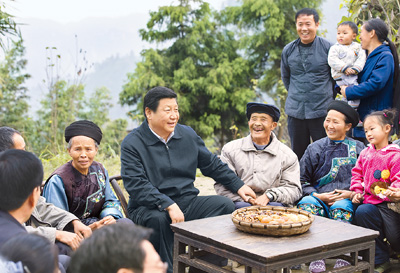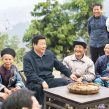
How to Watch the Third Plenum: Political Issues
Publication: China Brief Volume: 13 Issue: 22
By:

On Saturday, November 9, China will begin a major meeting on economic policy, expected to produce major statements of intent for reform. The outcomes of this meeting will be mainly economic policies, but as a headline statement about the direction of China under the Fifth-Generation Leadership, it will have major implications for the structure of the Chinese state and its evaluations of its interests in dealing with the outside world.
While the policies slated to appear at the three-day meeting are not known, official media have been actively stoking expectations for major reforms: indeed, they have in recent months frequently reported that “Reform hopes mount as third plenum nears” (Global Times, October 29). It is, therefore, a safe prediction that the Third Plenum will produce something that the Party can display as reform. However, the track record of major planning meetings shows that they are intended to establish priorities and goals rather than specific policies. The Plenum will almost certainly leave open major questions about how and when reforms will be implemented—and whether they will succeed.
President Xi Jinping and Premier Li Keqiang have both given their last major speeches before the plenum: Xi in rural Hunan and Li in a meeting with a group of economic experts. Xi’s speech—bracketed by a folksy incident in which an old woman politely asked him his name—was an evident return to the populist tone of his first weeks in office (People’s Daily Online, November 3). In his first months as chairman of the Party, Xi made a number of appearances speaking in clear language directed at a popular audience (a sharp contrast to the opaque, jargon-laden speeches of his predecessor), before devoting himself almost entirely to the high-profile party discipline campaign that has occupied most of his time since the spring. Li’s speech was an overview of China’s macroeconomic situation and the need for reform, most notable for establishing a benchmark level for annual GDP growth needed to maintain an acceptable level of employment: 7.2%, below the official annual target of 7.5% and the year-to-date rate of 7.8% (People’s Daily Online, November 5). Li emphasized, as he has done on several occasions, that the economy is on an even keel, with no room for stimulus but no need for tightening.
As analysts work through the policy statement that emerges on November 12, those interested in political and foreign relations should watch the following issues:
Leadership politics and party management
In addition to an economic planning session, the Third Plenum is a test of the new administration’s power. Xi and Li have been quite clear about what they want in the report, and failure to deliver on some of these issues—especially a national social welfare plan and restructuring of state-owned companies and local governments—will suggest that they have not been able to overcome the Party’s powerful economic interest groups. It will also be worth watching for codification of the new administration’s key slogans, especially the “China Dream” and the “mass line” discipline campaign.
A major question to follow is whether the mass line campaign is supplemented with efforts to develop institutionalized systems of oversight and control. While a high-profile political campaign may create the pressure necessary to drive reforms through a calcified system, implementation will require regular and extended oversight.
External Relations
Li has made “opening” (kaifang) China’s economy a key theme of his speeches over the last few months, including his pre-plenum macroeconomic overview. While this entails domestic reforms, he also highlighted China’s efforts to forge new free trade agreements and to fight what he described as “protectionism” abroad, citing the resolution of the China-EU photovoltaic industry trade dispute as a victory. While the overall goals he describes aim to transform the basis of China’s growth model from exports to domestic consumption, this suggests that he views continued export growth as a sine qua non for overcoming the dislocations of a vast economic transition (for more on Li’s view of growth and reform, see China Brief, Vol. 13, Issue 19).
If opening foreign markets in this sense is written into the plenum report, it will suggest that China’s recent batch of trading deals are viewed as economic necessities. This should incline explanations for the recent push on “peripheral diplomacy” (see “Diplomacy Work Forum: Xi Steps Up Efforts to Shape a China-Centered Regional Order” in this issue) toward domestic drivers, away from purely geo-strategic interpretations. It will also reinforce China’s concern with what it views as discrimination against Chinese investment in the United States.
Legitimacy
Finally, China’s leaders will be trying to sell their reform agenda to the public, an effort which may see Xi spending more time meeting farmers rather than overseeing Party study sessions. An issue to watch here is occupational safety—while it has been little discussed during the long build-up to the Plenum, it has been mentioned by several top leaders in the past week, including both Xi and Li in their pre-Plenum speeches, and State Councilor Wang Yong in a speech in Wuhan citing the end of a little-reported national three-month campaign on the issue (Xinhua, November 5). The issue could be one on which the leadership sees potential for immediate results, demonstrating their ability to improve life in China before harder reforms go into effect.
Foreign businesses with Chinese employees or suppliers will need to pay close attention—multi-national corporations have been the first to be hit in a wave of recent crackdowns on business malpractice, and are likely to face close scrutiny if workplace safety becomes a policy priority (See “Hunting Season for Multinationals in China?”, in this issue).





